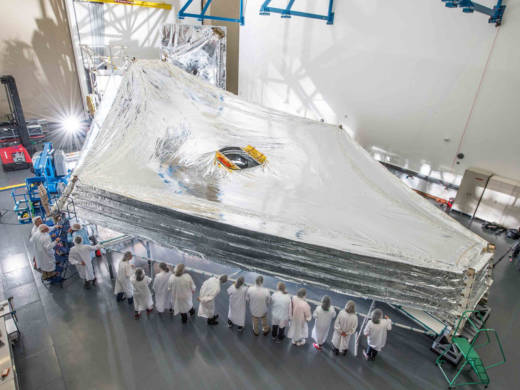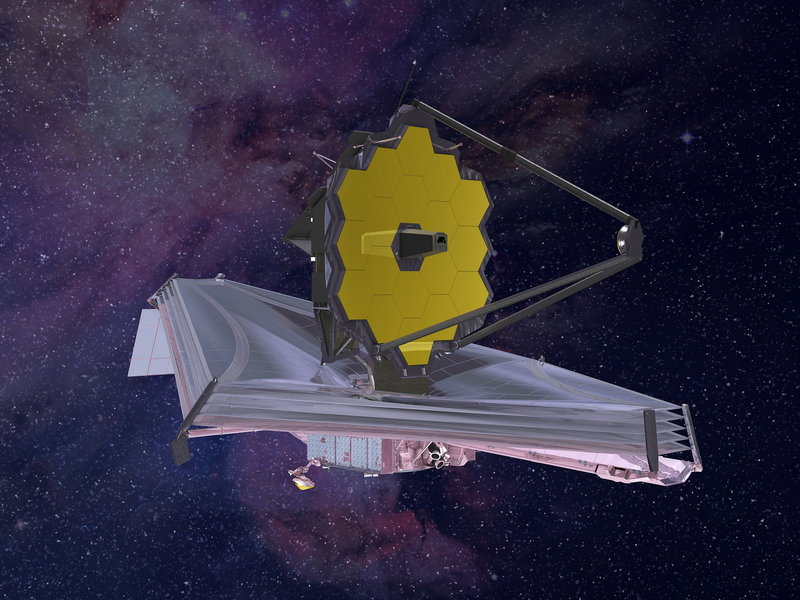The next generation of great space telescopes is heading into its final round of ground tests. The nearly $9 billion James Webb Space Telescope will replace the aging Hubble Space Telescope. It’s designed to provide unprecedented images of the earliest stars and galaxies that formed in the universe.
But before the telescope can get to work, there are still a lot of engineering challenges to overcome.
For example, the Webb telescope is designed to look at the infrared wavelengths of light given off by stars. Infrared is needed to see some of the earliest stars and galaxies that formed billions of years ago.
But to work properly, infrared telescopes have to be kept cold — very cold. So engineers had to design a multilayered sun shield to protect the telescope from the sun’s heat.
“That’s like a big umbrella — beach umbrella — so, we keep that facing the sun and the Earth so it dissipates all the heat through all the layers,” says Begoña Vila, an astrophysicist and systems engineer at NASA’s Goddard Space Flight Center, in Greenbelt, Md. “That allows all the instruments to cool to the temperatures that we need.”


9(MDAxOTAwOTE4MDEyMTkxMDAzNjczZDljZA004))
